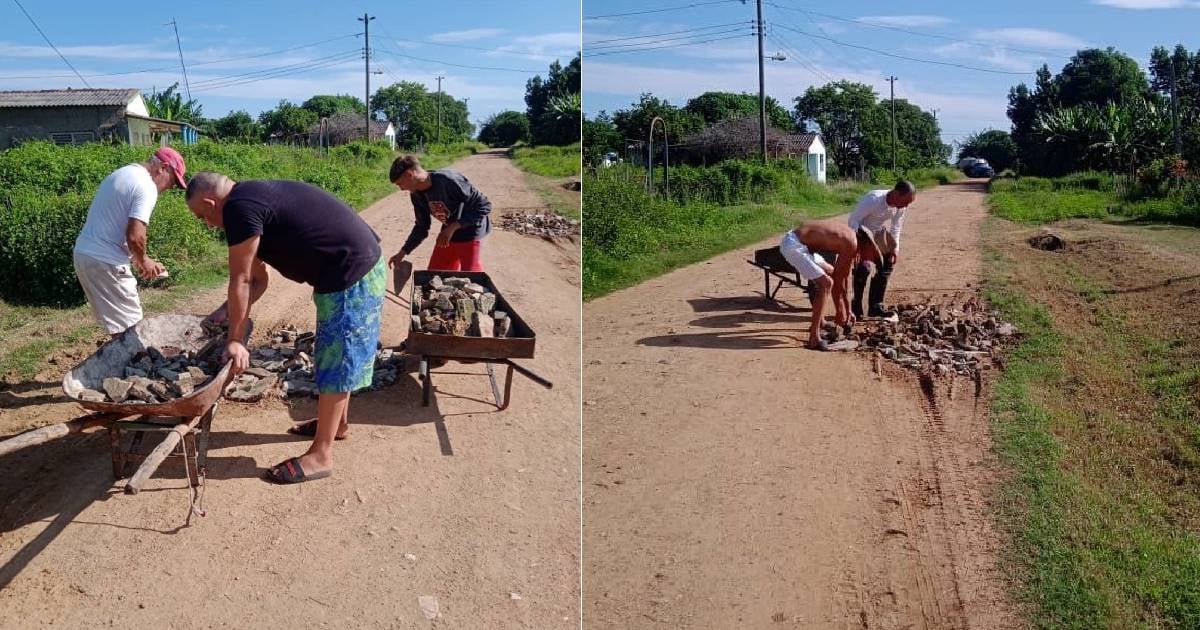
Cuban residents in the Villa Clara municipality of Corralillo were summoned by the authorities of that territory for a "voluntary work" event this Sunday, during which they were seen filling the holes in a poorly maintained and unpaved street with stones.
On social media, the President of the Municipal Assembly of Corralillo, Marilys Díaz, proudly shared the images that attest to the moment, a symbol of the lack of resources, the neglect, and the misery in which the inhabitants of settlements far from the provincial capitals live.
"From constituency 25, in the community of San Vicente, the neighbors were called to clean and fill the gaps in the road," said the local official, who shared the hashtags #PonleCorazón, #PoderPopular, and #DesdeLaComunidadHacemosCuba, a sample of the empty rhetoric that abounds in Cuban leadership.
In the shared images, the low turnout for the activity and the lack of suitable equipment for the rough work were evident. The stones were being carried by hand, while few men and women were seen cleaning around the poorly maintained road.
These types of scenes are typical, especially as the dates marked by the regime for celebrations approach, such as the upcoming September 28, the day the now worn-out Committees for the Defense of the Revolution (CDR) were founded, an organization that only high-ranking Cuban leaders believe in.
Last August, on the occasion of the 98th anniversary of the birth of dictator Fidel Castro, the Government and the Communist Party organized a day of voluntary work, but the response from the population was virtually nil.
In shared images, leaders are seen weeding the propaganda fences of the Revolution and the assailants of the Moncada Barracks, located on the Siboney road in Santiago de Cuba. This type of task, more symbolic than productive, underscores the forced nature of an activity that is presented as "voluntary."
There have been various occasions when Cubans have criticized the ruler Miguel Díaz-Canel after seeing photographs of him in some volunteer work.
In April, the official portal Cubadebate shared on its Facebook wall photos of the ruler posing in a cornfield, an image that many called false, ridiculous, and even a disrespect to true farmers.
What do you think?
COMMENTFiled under: